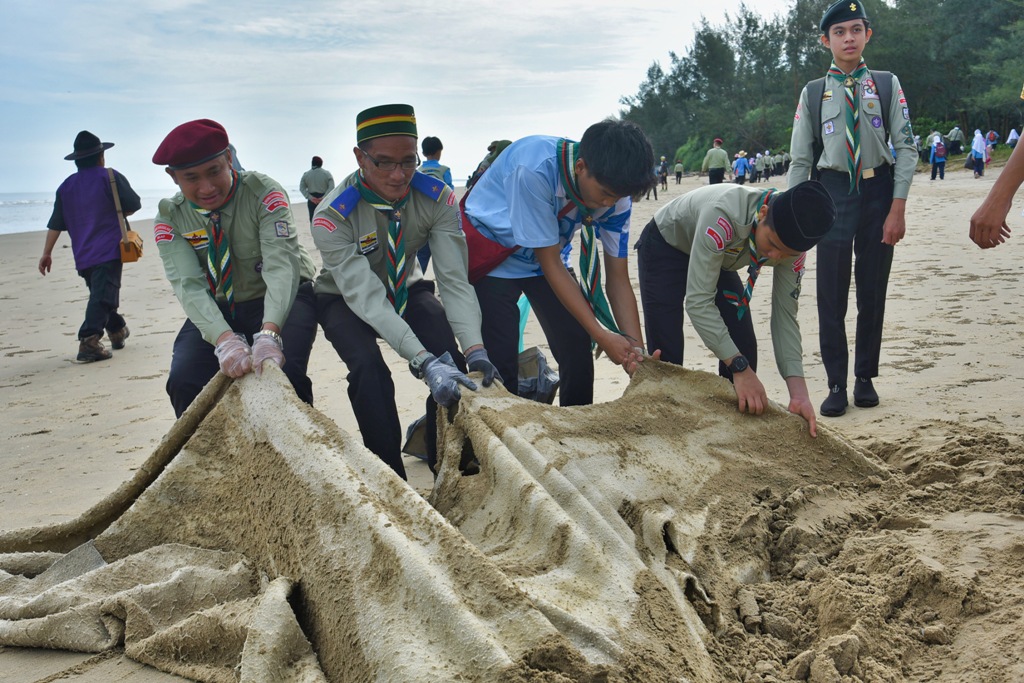The recent collapse of the iconic Double Arch at Glen Canyon National Recreation Area has raised concerns about the safety and stability of similar natural structures. The Double Arch, a geological marvel formed from 190-million-year-old Navajo sandstone, fell victim to natural processes of erosion that are both the creator and destroyer of such formations. Changing water levels and erosion are believed to have contributed to the collapse.
The Double Arch stood in Rock Creek Bay , about 36 miles up the lake from Antelope Point Marina at the lake’s west end and nearly 60 miles down the lake from Bullfrog Marina at the lake’s east end. The collapse was especially dramatic since when it started there were visitors standing on it and swimmers in the water beneath it. This event has prompted visitors and nature enthusiasts to question the safety of visiting other arches, especially those in nearby areas like Utah’s Arches National Park.

Seeing Delicate Arch or equally iconic formations may be on your bucket list, but is it safe? It’s important to understand that all natural arches are subject to the same forces of nature that led to the collapse of the Double Arch. These forces include weathering, erosion, and gravity, which over time, sculpt and eventually break down the sandstone structures, and no, there is no foolproof way to determine when a collapse may occur. The National Park Service (NPS) has emphasized the importance of preserving the natural processes that form these arches, rather than attempting to artificially maintain or stabilize them.
But it is equally important to know that the NPS has implemented measures to protect both visitors and the arches themselves. So, how does the NPS monitor and ensure the safety of these natural arches? At the heart of their efforts is the Northern Colorado Plateau Network, which conducts comprehensive monitoring across various parks, including Arches National Park, in eastern Utah, where there are over 2,000 documented natural sandstone arches, ranging in size from thin cracks to spans of over 300 feet. The park’s arches are sculpted over millions of years, from Jurassic-aged sandstone that was once a desert with shifting dunes of fine-grained sand.
The Northern Colorado Plateau Network is a scientific sentinel, vigilantly tracking a suite of environmental factors that could impact the arches’ stability and longevity. From air quality to climate, land surface phenology to landscape dynamics, the NPS leaves no stone unturned—or unmonitored. One of the key aspects of their monitoring is the focus on landbirds, springs and seeps, upland vegetation, and soils.
These elements are crucial indicators of the overall health of the park’s ecosystem. By keeping a close eye on these, the NPS can detect early signs of erosion or other potential threats to the arches. Among some of the practical measures that they have taken for visitors’ safety is to close off areas beneath certain arches, especially if there are signs of instability such as popping, snapping, or cracking sounds.
The NPS understand that these natural arches are more than just rock formations; they are historical records, standing witnesses to the Earth’s geological past, and they are cultural icons, inspiring wonder and reverence, but safety is equally important. The collapse of the Double Arch serves as a reminder of the transient nature of these geological features and the need to appreciate and respect them from a safe distance, but it’s impossible to predict exactly when an arch might collapse. For those planning to visit other arches, it’s recommended to stay on designated trails, observe all posted signs and warnings, and avoid climbing on or under the arches.
Admire them from a bit of distance. By following these guidelines and respecting the natural processes at work, visitors can safely enjoy their awe-inspiring beauty and tick another experience off their bucket list of wonders..



















